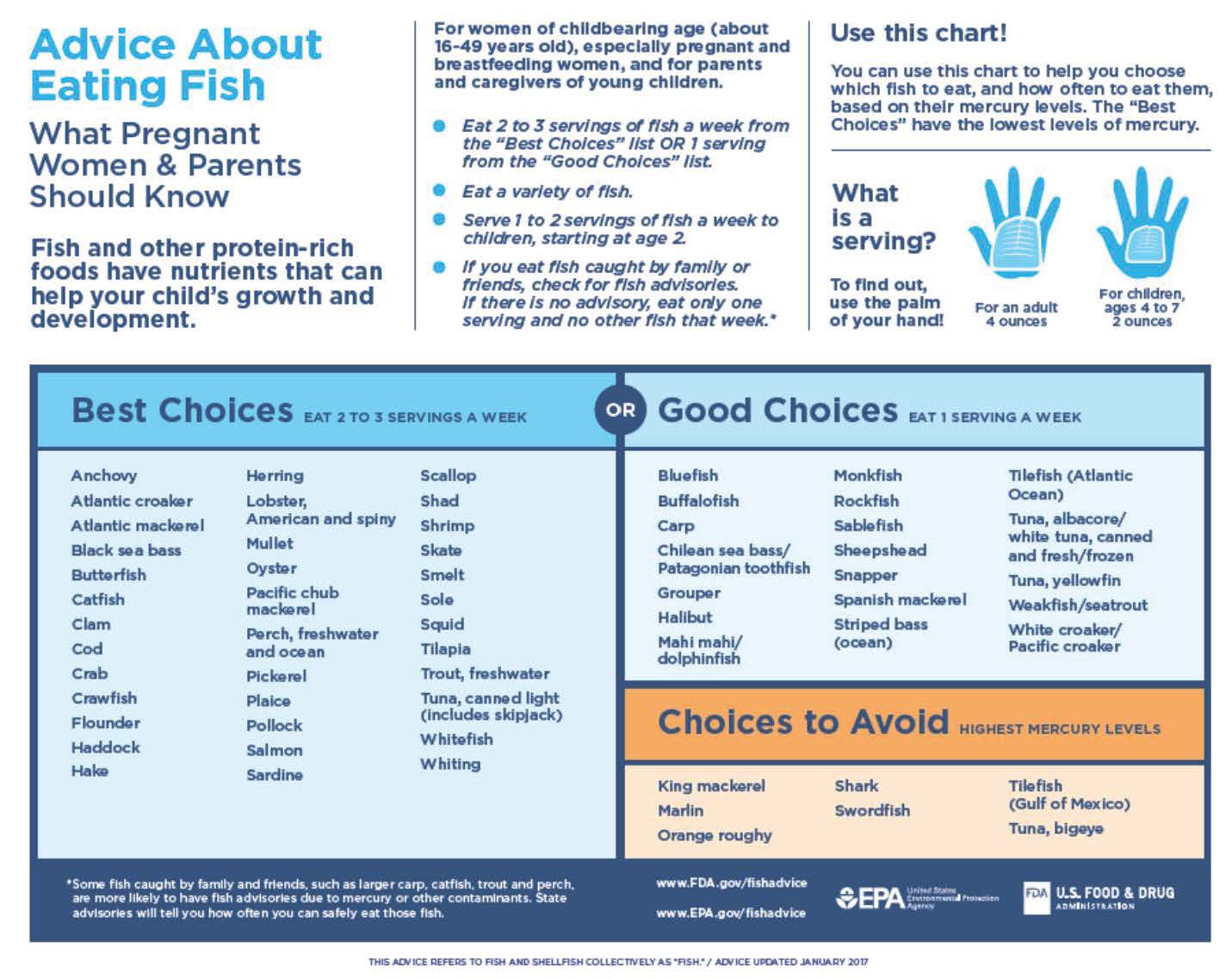Including fish in your diet is a good way to get protein and healthy omega-3 fatty acids without ingesting too many saturated fats. However, nearly all fish contain some traces of mercury.
In 2017, the U.S. Food and Drug Administration (FDA) and the U.S. Environmental Protection Agency (EPA) issued revised advice regarding fish consumption for pregnant women or women who may become pregnant, as well as breastfeeding mothers and parents of young children.
Official recommendations
The American College of Obstetricians and Gynecologists (ACOG) encourages pregnant women, women who may become pregnant, and breastfeeding mothers to follow the FDA and EPA's revised advice (see chart):
Eat 2-3 servings a week (8 to 12 ounces in total) of a variety of fish
Eat only 1 serving a week (no more than 6 ounces) of some fish, such as albacore (white) tuna and fish with similar mercury concentrations to albacore (white) tuna
Avoid certain fish with the highest mercury concentrations
Check for advisories for fish caught by family and friends and where no advisories exist; limit eating those fish to one serving a week and do not eat other fish that week.

Women who follow this advice may experience the benefits of seafood consumption without experiencing an increase in related risk from mercury to themselves or their babies.
About mercury
Mercury is a metal that occurs naturally in the environment and that is increased by industrial pollution. Most people are not affected by these tiny amounts of mercury. If a woman is exposed to high levels of mercury before or while she is pregnant, her health and the baby's health are threatened. Babies exposed to mercury in the womb can suffer:
Have questions?
Discuss these recommendations and the potential benefits of seafood consumption with your obstetrician-gynecologists or other obstetric providers. In addition, your regional Pediatric Environmental Health Specialty Unit (PEHSU) have staff who can also talk with parents about concerns over environmental toxins.
Keep in mind the 3 serving/12 ounces per week limit to avoid the harmful effects of mercury.
More information